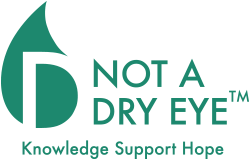The 2007 Dry Eye Workshop Diagnostic Methodology Committee included several diagnostic methodologies developed by different doctors and organizations, as well as a table of methodologies in development.
An example of one diagnostic methodology table in the report grades test invasiveness, increasing from A to L. (See below). The authors recommended that some time interval should be left between tests, and that tests selected would depend on facilities, feasibility, and other operational factors.
Diagnostic Methodology Table
| Group | Assessment | Technique |
| A | Clinical history | Questionnaire |
| Symptoms e.g.: dry eye | Symptom questionnaire | |
| B | Evaporation rate | Evaporimetry |
| C | Tear stability | Non-invasive TFBUT (or NIBUT) |
| Tear lipid _ lm thickness | Interferometry | |
| Tear meniscus radius/volume | Meniscometry | |
| D | Osmolality; proteins lysozyme; lactoferrin | Tear sampling |
| E | Tear stability | Fluorescein BUT |
| Ocular surface damage; Grading | fluorescein;lissamine green | |
| Meniscus, height, volume | Meniscus slit profile | |
| Tear secretion turnover | Fluorimetry | |
| F | Casual lid margin oil level | Meibometry |
| G | Index of tear volume | Phenol red thread test |
| H | Tear secretion | Schirmer I with anesthesia |
| Schirmer I without anesthesia | ||
| Reflex tear secretion | Schirmer II (with nasal stimulation | |
| I | Signs of MGD | Lid (meibomian gland morphology) |
| J | Meibomian gland function | MG expression |
| Expressibility of secretions | ||
| Volume | ||
| Quality | ||
| Meibomian physicochemistry | Oil chemistry | |
| K | Ocular surface damage | Rose bengal stain |
| L | Meibomian tissue mass | Meibography |
Methodologies to diagnose and monitor dry eye disease: report of the Diagnostic Methodology Subcommittee of the International Dry Eye WorkShop (2007)
Ocular Surface
2007 Apr;5(2):108-52.
View the full report

